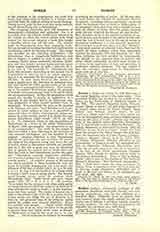

Busiris, a titular see taking its title from one of the many Egyptian cities of the same name. This particular Busiris was situated in the middle of the Delta, on the Pathmitish, or Damietta Branch of the Nile. The ancient Egyptian name, Pa-osiri, means “House of Osiris”, the god being supposed to be buried there; hence the Coptic Pousiri, Greek Pousipis and Bouseipis, Arabic Abusir. It now exists as a village under the last of these names and is to be distinguished from another similarly named town on the coast of Lydia. Busiris was the chief town of the Busirite nomos (Hierocles, Synecdemos 725, 7) and became a see of Aegyptus Secunda. Its bishop, Hermaeon, is mentioned at Nicaea (325) by Meletius, as one of his partisans. About this time there was united to the title of Busiris that of Kynos, from the important city of Lower Kynos (Athanas., “Apol. c. Arianos”, lxxviii, in P.G., XXV, 376). Its bishop, Athanasius, defended Dioscorus at the Latrocinium of Ephesus in 449, but apologized publicly at Chalcedon (Liberatus, Breviarium, xiv). From the seventh century on, the see is mentioned in the lists of the Greek patriarchate (Georgius Cyprius, 736), though its titulars belong really to the Jacobite patriarchate. Thus, in 742, its bishop, James, takes a part in the election of the Patriarch Michael I (Renaudot, “Hist. Patriarch. Alexandrin.”, 207); a little later, under the same patriarch, its bishop, Peter, is mentioned (ibid., 227); we hear also of Severus, under Philotheus (979-1003) and of Chail, or Michael, and Mohna in the thirteenth century (ibid., 458, 569).
L. PETIT

